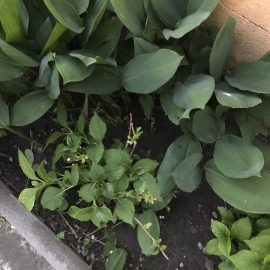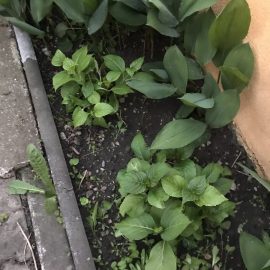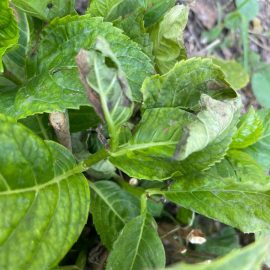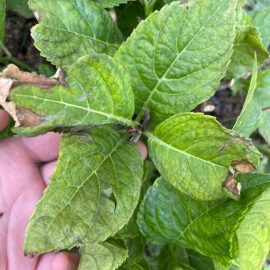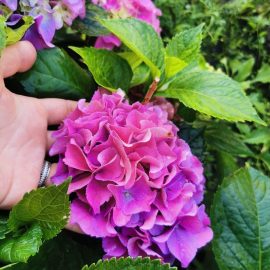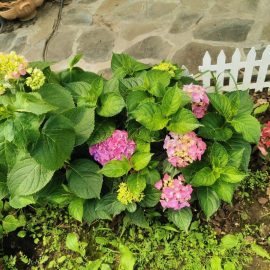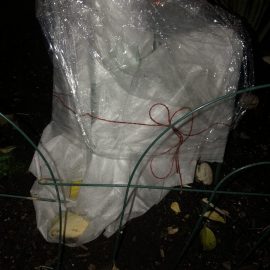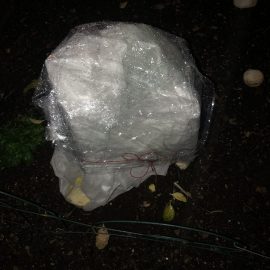Hortensia, planting guide and care work
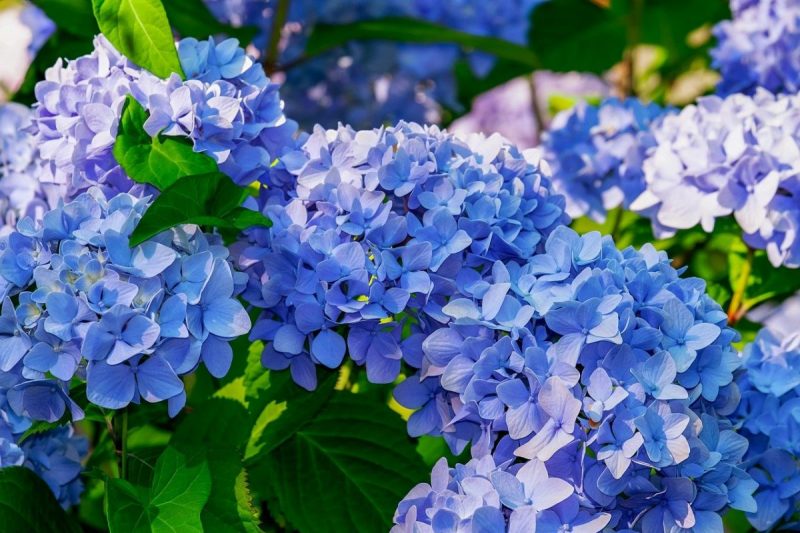
Hortensia (Hydrangea) is a genus comprising 70-75 species of flowering plants in the Saxifragaceae family, native to Asia and America. Most are shrubs with a height of 1-3 m, some grow in the form of small trees, and others are vines that reach up to 30 m in height. They can have evergreen or deciduous foliage. All species in temperate areas have deciduous leaves.
Hydrangeas bloom from early spring to late autumn. It forms corymbose or panicle-shaped inflorescences, arranged terminally. It has two types of flowers: small (in the center of the inflorescence) and large (with voluminous sepals, variously colored). Most species have white flowers, but some species change their flower color depending on the soil’s pH.
Hortensia is an ornamental plant often found in gardens and parks, as isolated specimens, or in groups.
The name of the genus “Hydrangea” comes from Greek and means “water vessel”, referring to the shape of the seed capsules.
Species and varieties
Hydrangea macrophylla (French hydrangea) is a species native to China and Japan, which grows to a height of 1-2 m. The leaves are large (10-20 cm), oval in shape. The inflorescences are spherical, consisting of sterile, large, white flowers. Cultivars:
‘Soeur Therese’ – hortensia with white inflorescences.
‘Merveille’ – hortensia with intense pink inflorescences.
‘King George’ – hortensia with red inflorescences. It blooms late.
‘Bluewave’ – it has inflorescences made up of small, blue (fertile) flowers in the center and large, purple (sterile) flowers towards the exterior.
Hydrangea arborescens (Smooth hydrangea) is a species native to the USA, which grows 1.5-3 m tall. The leaves are oval, with a pointed tip. The inflorescences are spherical, 5-10 cm in size, and are white. They develop in June-July and are fertile. Cultivars:
‘Grandiflora’ – the inflorescences have larger, white, sterile flowers.
Hydrangea paniculata is a species native to China and Japan. It grows as a tall shrub, 2-3 m high. It develops vigorous, pubescent vines. The leaves have an ovate or elliptical shape, acuminate, with a pubescent underside. It blooms in July-August. The inflorescences are large panicles, arranged terminally. Cultivars:
‘Grandiflora’ – with white, sterile, large flowers.
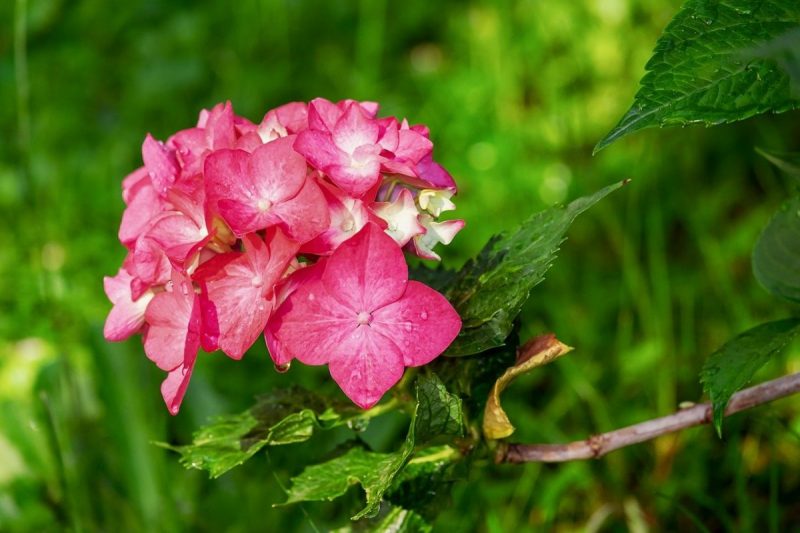
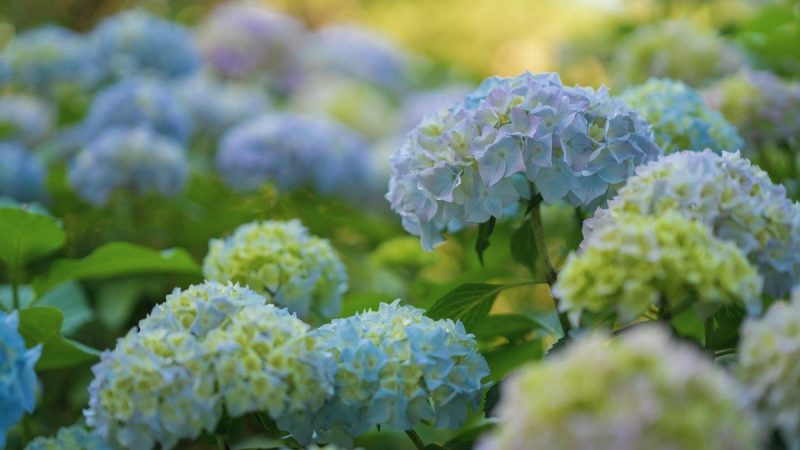
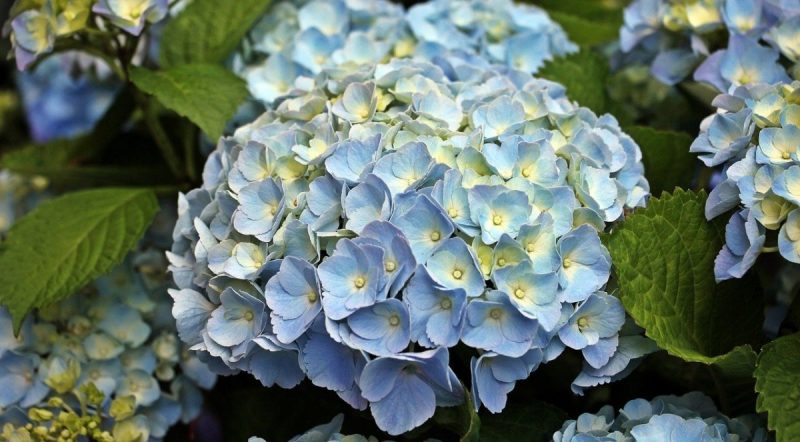
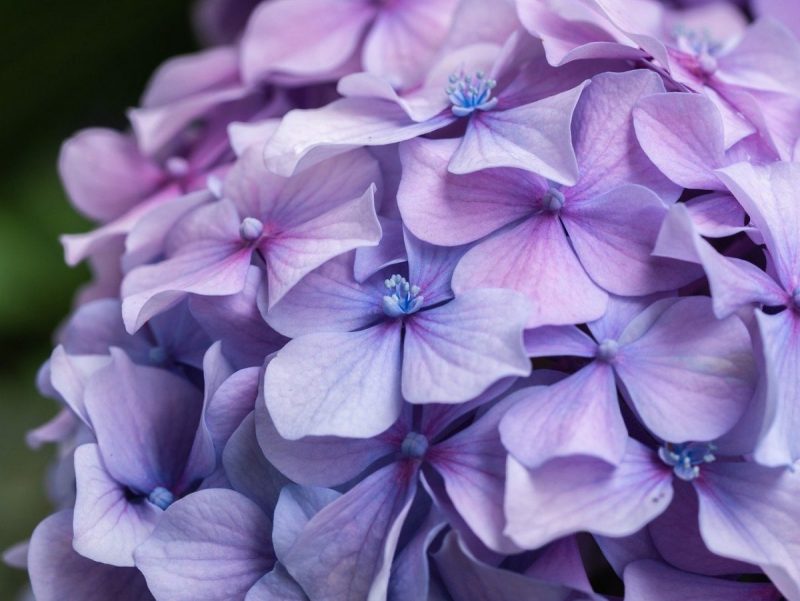
Environmental conditions
Light. Hydrangeas prefer to be placed in partial shade, except for the species H. paniculata, which prefers sunny places.
Temperature. H. macrophylla (French hydrangea) is sensitive to frost and needs protection during the winter. The other species are more resistant to low temperatures.
Soil. They grow well in damp, fertile soils. It cannot withstand calcareous soils.
Watering
Watering should be done frequently to keep the soil moist.
Fertilization
During the flowering period (March-October), it is recommended to apply a specific fertilizer for Hydrangeas. It will cause the pH of the soil to decrease, and the content of aluminum sulfate contributes to the intensification of the blue color of the flowers.
Recommended products
-
You can find products on a different store
Change Store -
You can find products on a different store
Change Store -
You can find products on a different store
Change Store -
You can find products on a different store
Change Store -
You can find products on a different store
Change Store -
You can find products on a different store
Change Store -
You can find products on a different store
Change Store -
You can find products on a different store
Change Store -
You can find products on a different store
Change Store -
You can find products on a different store
Change Store -
You can find products on a different store
Change Store -
You can find products on a different store
Change Store -
You can find products on a different store
Change Store -
You can find products on a different store
Change Store -
You can find products on a different store
Change Store -
You can find products on a different store
Change Store -
You can find products on a different store
Change Store -
You can find products on a different store
Change Store -
You can find products on a different store
Change Store -
You can find products on a different store
Change Store -
You can find products on a different store
Change Store -
You can find products on a different store
Change Store -
You can find products on a different store
Change Store -
You can find products on a different store
Change Store
Pruning
Hydrangea shape correction cuts are not necessary, only in case of removing dry or affected parts of the plant.
Diseases and pests
Hydrangeas can be affected by powdery mildew and gray mold. The pests that can infest the hydrangeas are aphids and mites.
Recommended products
-
You can find products on a different store
Change Store -
You can find products on a different store
Change Store -
You can find products on a different store
Change Store -
You can find products on a different store
Change Store -
You can find products on a different store
Change Store -
You can find products on a different store
Change Store -
You can find products on a different store
Change Store -
You can find products on a different store
Change Store -
You can find products on a different store
Change Store -
You can find products on a different store
Change Store -
You can find products on a different store
Change Store -
You can find products on a different store
Change Store -
You can find products on a different store
Change Store -
You can find products on a different store
Change Store -
You can find products on a different store
Change Store -
You can find products on a different store
Change Store -
You can find products on a different store
Change Store -
You can find products on a different store
Change Store -
You can find products on a different store
Change Store -
You can find products on a different store
Change Store -
You can find products on a different store
Change Store -
You can find products on a different store
Change Store -
You can find products on a different store
Change Store -
You can find products on a different store
Change Store
Recommended products
-
You can find products on a different store
Change Store -
You can find products on a different store
Change Store -
You can find products on a different store
Change Store -
You can find products on a different store
Change Store -
You can find products on a different store
Change Store -
You can find products on a different store
Change Store -
You can find products on a different store
Change Store -
You can find products on a different store
Change Store -
You can find products on a different store
Change Store -
You can find products on a different store
Change Store -
You can find products on a different store
Change Store -
You can find products on a different store
Change Store -
You can find products on a different store
Change Store -
You can find products on a different store
Change Store -
You can find products on a different store
Change Store -
You can find products on a different store
Change Store -
You can find products on a different store
Change Store -
You can find products on a different store
Change Store -
You can find products on a different store
Change Store -
You can find products on a different store
Change Store -
You can find products on a different store
Change Store -
You can find products on a different store
Change Store -
You can find products on a different store
Change Store -
You can find products on a different store
Change Store
Planting
It can be planted in spring or autumn, during the vegetative dormancy period, at temperatures above 5° C, if the soil is not frozen and there is no danger of frost. Be sure to purchase planting material from authorized nurseries. Immediately after planting, the soil should be well-trodden and watered abundantly. After that, the earth must be kept moist.
Propagation
Hydrangeas can be propagated through cuttings, seeds, or by dividing the bush.
- cuttings should be planted in hotbeds. Cuttings must be harvested at the end of summer, and should be 9-10 cm long and have 2-3 knots. To stimulate rooting, a suitable treatment is recommended.
- only pure species multiply through seeds, not varieties. They should be sown in spring, in warm hot beds.
Recommended products
-
You can find products on a different store
Change Store -
You can find products on a different store
Change Store -
You can find products on a different store
Change Store -
You can find products on a different store
Change Store -
You can find products on a different store
Change Store -
You can find products on a different store
Change Store -
You can find products on a different store
Change Store -
You can find products on a different store
Change Store -
You can find products on a different store
Change Store -
You can find products on a different store
Change Store -
You can find products on a different store
Change Store -
You can find products on a different store
Change Store -
You can find products on a different store
Change Store -
You can find products on a different store
Change Store -
You can find products on a different store
Change Store -
You can find products on a different store
Change Store -
You can find products on a different store
Change Store -
You can find products on a different store
Change Store -
You can find products on a different store
Change Store -
You can find products on a different store
Change Store -
You can find products on a different store
Change Store -
You can find products on a different store
Change Store -
You can find products on a different store
Change Store -
You can find products on a different store
Change Store
In addition:
- acidification of the potting substrate will not stimulate the intensification of the blue color of the flowers in the absence of aluminum ions, contained by special fertilizers.
- a calcareous soil will cause a decrease in the content of iron ions, the plant showing symptoms of discoloration and reddening of the foliage.
- removing dry inflorescences favors re-flowering.














































































































































































































































































































































































































































